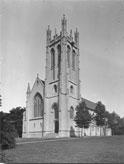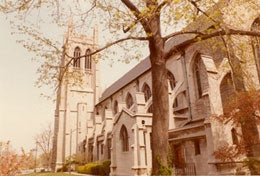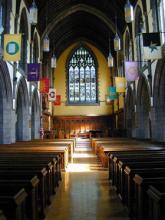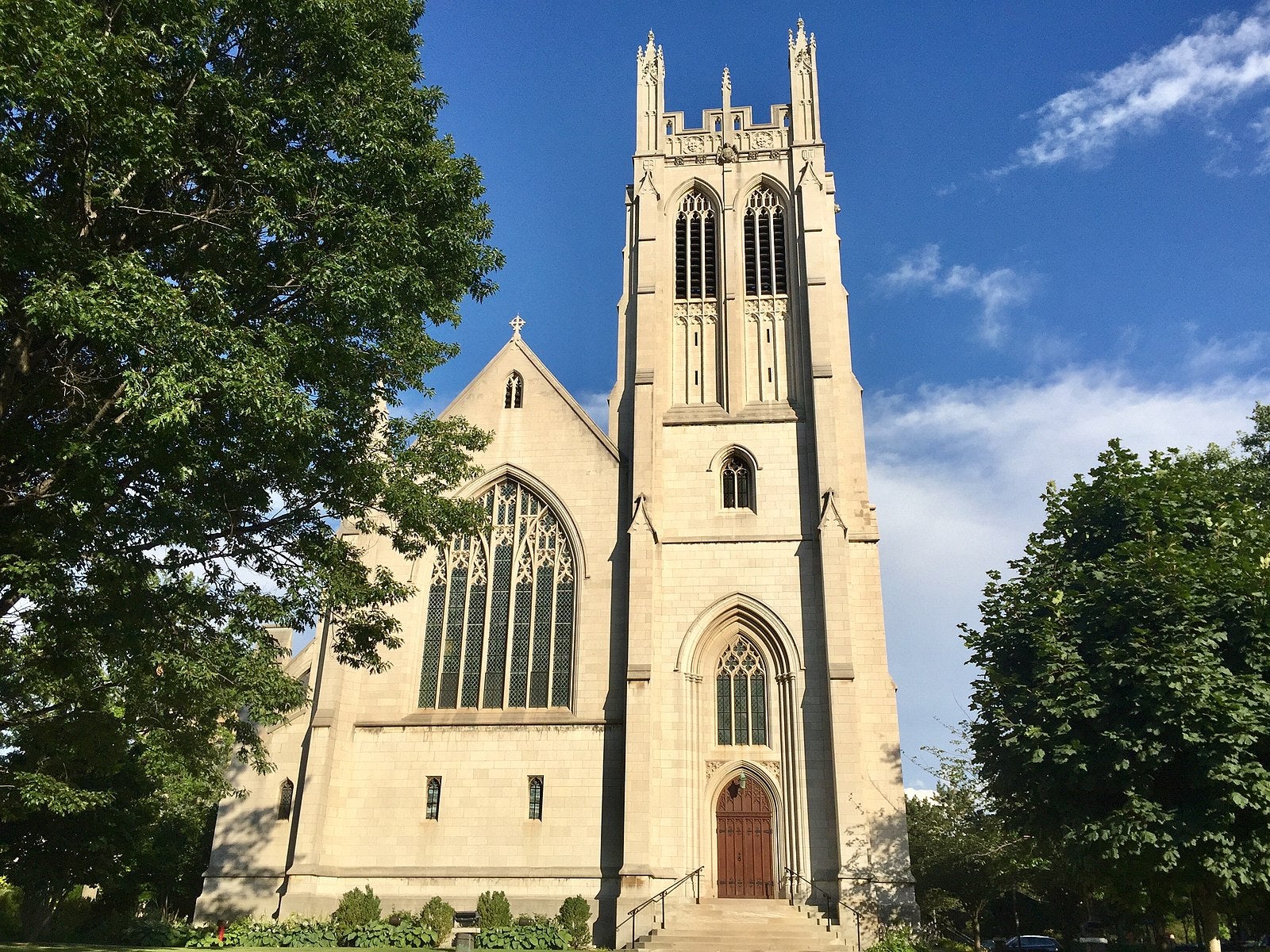10940 Euclid Ave, Cleveland, Ohio 44106
The concept to build a memorial to their father Amasa Stone was conceived by Clara Hay and Flora Stone Mather. With the aid of President Charles F. Thwing (President, WRU 1890-1921), the construction of a campus chapel was encouraged because it met “…a most urgent need of College life.”
In 1907 architect Henry Vaughn of Boston was appointed by the sisters to create the chapel. Designed in the 14th century English Gothic style that had increased in popularity at the turn of the 20th century, the Amasa Stone Chapel boasts an impressive tower which was designed to be a “representative of the aspirations of the University.” The windows of the chapel have been recognized as excellent examples of ecclesiastical glass. The large stained glass window was donated by Clara Hay in memory of her sister.
It is somewhat ironic that the beautiful chapel that graces one end of the main campus at Case was built in honor of a man once devastated by public ridicule. Amasa Stone took his own life in 1883 after being unfairly accused by a coroner’s jury for the numerous deaths involved in the infamous Ashtabula train disaster.
Decorations of note include the sculpted head of Amasa Stone at the east entrance, and the statue Philanthropy located in the rear of the chapel (dedicated in honor of Flora Stone Mather). Seating 545 people comfortably, the chapel is used by students, alumni, and faculty for various events, ranging from academic ceremonies to weddings.





